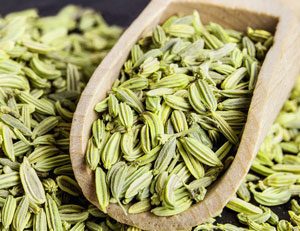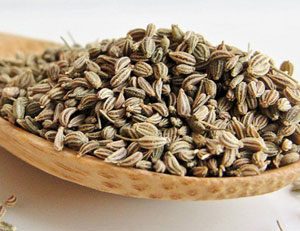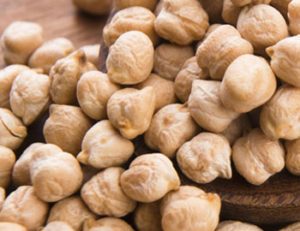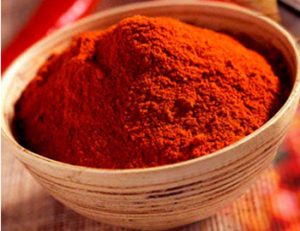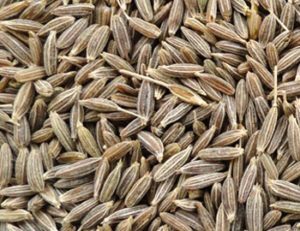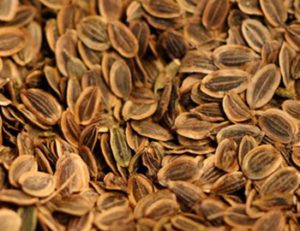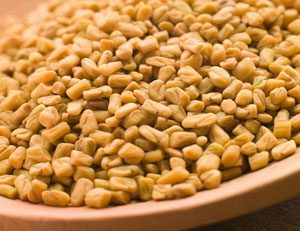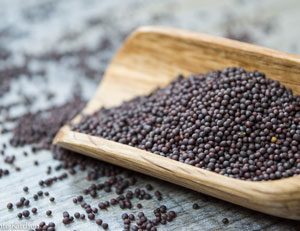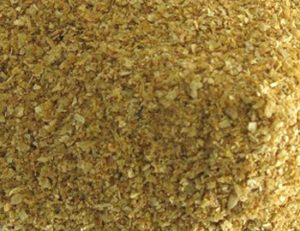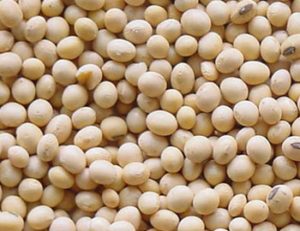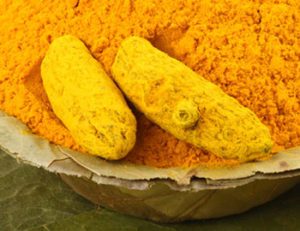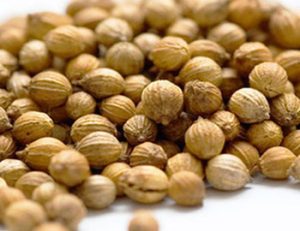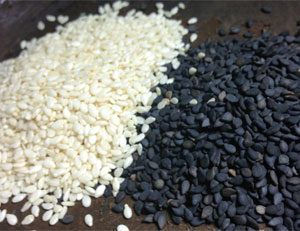
Description
It is a biennial, aromatic, stout, glabrous, 1.5 to 1.8 mtr high. The ripe fruit (seed) is small, oblong, cylindrical, 6.8mm long, straight or slightly curved, greenish yellow, deeply furrowed, 5 ridged and having agreeable aroma.
Specifications
[table id=20 /]USES
The leaves of fennel is used for garnishing. Leaves and stalks are used in salads. It is an essential ingredient in Italian sausages, widely used to sprinkle on pizza. Dried fruits have fragrant odour and pleasant aromatic taste and therefore used as a masticatory. They are also used for flavouring soups, meat dishes, sauces, pastries, confectionaries and liquors. The fruits are aromatic, stimulant and carminative.
INDIAN NAME OF SPICES
Bengali : Pan, Muhiri, Mauri
Gujarati : Variari
Kannada : Badi-sopu
Malayalam : Perum jeerakam Marathi : Badishep
Punjabi : Saunf
Sanskrit : Madhurika
Tamil : Shombei
Telugu : Sopu, Pedda-jilakara
FOREIGN NAME OF SPICES
French : Fenouil
German : Fenchel
Swedish : Fankal
Arabic : Shamar
Dutch : VenkelItalian : Finocchio
Portuguese : Funcho
Russian : Fyenkhel
Japanese : Uikyo
Chinese : Hui-Hsiang
ORIGIN AND DISTRIBUTION
It is a native of Europe and Asia Minor. It is cultivated extensively in Northern India as a cold weather crop. It comes up well in fairly mild climate. The dry and cold weather favours high seed production. Prolonged cloudy weather at the time of flowering is conducive to diseases and pests.

Description
An erect, glabrous or minutely pubescent, branched annual. The stems are striate; the leaves are rather distant, 2-3-pinnately divided, the segments linear. The flowers occur in terminal or seemingly-lateral pedunculate, compound umbels, white and small; the fruits are ovoid, muricate, aromatic cremocarps, greyish brown; the mericarps, which are the components of the fruit, are compressed, with distinct ridges and tubercular surface, 1-seeded.
Specifications
[table id=27 /]Usage
It is traditionally used as a digestive aid, relieves abdominal discomfort due to indigestion and antiseptic. In southern parts of India dry ajwain seeds are powdered and soaked in milk, which is then filtered and fed to babies. Many assume that it relieves colic in babies and for kids it also improves digestion and appetite. Ajwain can be used as digestive mixture in large animals. In the northern part of India, Ajwain is often consumed after a heavy meal. It is commonly offered after dinner parties.
INDIAN NAME OF SPICES
Bengali : Jowan or Joan
Gujarati : Yavan
Kannada : Oma
Kashmiri : Jawind
Malayalam : Omum
Marathi : Onva Oriya : Juani
Punjabi : Ajamoda, Avanika
Sanskrit : Ajamoda, Avanika
Tamil : Omum
Telugu : Vamu
Urdu : Ajowain
FOREIGN NAME OF SPICES
Persian : Zinian, NankhwahArabic : Kamme Muluki
ORIGIN AND DISTRIBUTION
Ajwain originated in the Middle East, possibly in Egypt and the Indian Subcontinent, but also in Iran, Egypt and Afghanistan. In India, the major Ajwain producing states are Rajasthan and Gujarat, where Rajasthan produces about 90% of India’s total production.

Description
The chickpea or chick pea (Cicer arietinum) is a legume of the family Fabaceae, subfamily Faboideae. Its different types are variously known as gram, or Bengal gram, garbanzo or garbanzo bean, Kabuli Chana (India) or Egyptian pea. Its seeds are high in protein. It is one of the earliest cultivated legumes: 7,500-year-old remains have been found in the Middle East. It is renowned for the delicious nut like taste and high protein content.
Specifications
[table id=25 /]Origin and Distribution
Chick peas were found in the late Neolithic (about 3500 BC) at Thessaly, Kastanas, Lerna and Dimini, Greece. In southern France, Mesolithic layers in a cave at L’Abeurador, Aude, have yielded wild chickpeas carbon dated to 6790±90 BC. In 1793, ground-roast chickpeas were noted by a German writer as a substitute for coffee in Europe. In the First World War, they were grown for this use in some areas of Germany. They are still sometimes brewed instead of coffee. Chickpeas are grown in the Indian subcontinent, Australia, Mediterranean, western Asia, the Palouse region and the Great Plains (both in the USA). India is the world leader in chickpea (Bengal gram) production, and produces approximately 10 times as much as the second-largest producer, Australia. Other key producers are Pakistan, Turkey, Myanmar, Ethiopia, and Iran.
Usage
Used for making homos, mature chickpeas can be cooked and eaten cold in salads, cooked in stews, ground into flour called gram flour. Mostly used in cooking snacks .

Description
Chilli is the dried ripe fruit of the genus Capsicum. Capsicum annuum is an annual sub –shrub, the flowers of which are borne singly and fruits usually pendent, which provide red peppers, cayenne, paprika and chillies and sweet pepper (bell pepper) a mild form with large inflated fruits.
Capsicum frutescence is a perennial chilly with small sized pods which are highly pungent. It is commonly known as ‘bird chilly’ and ‘Tabasco’.
Different Varieties
ELLACHIPUR SANNAM-S4 TYPE
- Grown in Amaravathi District of Maharashtra
- Reddish in colour and very hot
- Annual Production – 1800 tonnes
- Harvesting season-September to December
- Available in Bombay,Delhi,Ahemedabad and Nagpur
- ASTA colour value – 70.40
- Capsaicine-0.2%
GUNTUR SANNAM-S4 TYPE
- Grown in Guntur,Warangal,Khammam Districts of Andhra Pradesh
- Skin thick,hot and red
- Harvesting season – December to May
- Annual Production – 2,80,000 tonnes
- Available in Guntur market
- ASTA colour value- 32.11
- Capsaicine-0.226%
JWALA
- Grown in Kheda, Mehsana & in South Gujarat
- Highly pungent, light red in colour,short and the seeds are compact
- Harvesting season-September to December
- Available in Unjha market
- Capsaicine-0.4%
KASHMIR CHILLI
- Grown in temperate regions such as Himachal Pradesh,Jammu & Kashmir and also in sub-tropical regions of North India during winter season
- Long,fleshy,deep red in colour
- Harvesting season- November to February
- Available in major markets of North India
- ASTA colour value- 54.10
- Capsaicine-0.325%
MADHYA PRADESH G.T.SANNAM
- Grown in Indore, Malkapur Chikli and Elachpur areas of Madhya Pradesh
- Red in colour and pungent
- Harvesting season-January to March
- Annual Production – 7500 tonnes
- Available in major markets of Madhya Pradesh.
Specifications
[table id=29 /]USES
Dry chilly is extensively used as spice in curried dishes. It is also used as an ingredient in curry powder and in seasonings. Bird chilly is used in making hot sauces as pepper sauce and Tabsco sauce. Paprika, Bydagi chilly, Warangal chapatta and similar high colour less pungent varieties are widely used for colour extraction. This colour is highly popular among food and beverage processors for its use as a colourant, since this being a ‘natural plant colour’. As a medicine it is used as an counter irritant in Lumbago, Neuralgia, and Rheumatic disorders. Capsicum has a tonic and carminative action. Taken inordinately it may cause gastro-enteritis. The enzyme isolated from chilly is used in the treatment of certain type of cancers. Oleoresin capsicum is used in pain balms and vaporubs. Dehydrated green chilly is a good source of vitamin ‘c’
INDIAN NAME OF SPICES
Bengali : Lanka, Lankamorich
Gujarati : Marcha
Kannada : Mensina kai
Malayalam : Mulaku
Marathi : Mirchi Oriya : Lanka
Punjabi : Lalmirch
Tamil : Milagay
Telugu : Mirapa kaya
Urdu : Lalmirch
FOREIGN NAME OF SPICES
French : Puvre de Guinee
German : Paprika
Arabic : Filfil Ahmar
Dutch : Spaanse Peper
Italian : PeperonePortuguese : Pimento
Russian : Struchkovy pyeret
Japanese : Togarashi
Chinese : Hesiung Yali chiao
British : Chillies(Hot) Pepper(Sweet)
ORIGIN AND DISTRIBUTION
Chilly is reported to be a native of South America and is widely distributed in all tropical and sub tropical countries including India. It was first introduced in India by Portuguese towards the end of 15th Century. Now it is grown all over the world except in colder parts.

Description
Cumin is the dried, white fruit with greyish brown colour of a small slender annual herb. The surface of the fruit has 5 primary ridges, alternatively has 4 less distinct secondary ridges bearing numerous short hairs. The plant is 15 to 50 cm high. The aromatic seed like fruit is elongated, ovoid, 3 to 6 mm long, slightly bitter and has a warm flavour. The flowers are white or rose coloured in small umbels.
Specifications
[table id=21 /]Usage
Cumin seed have an aromatic odour and bitter taste. It is used as a condiment, and is an ingredient in curry powders, seasonings of breads, cakes and cheese. It is employed in native dishes of Central and South America. In medicine, it is used as a stimulant, carminative, stomachic and astringent. Cumin seed oil is used in perfumery and for flavouring liqueurs and cordials.
INDIAN NAME OF SPICES
Or Zeera
Bengali : Safaid jira or Zeera
Gujarati : Jiru or Jeeru
Kannada : Jeeriege
Kashmiri : Zyur
Malayalam : Jeerakam Marathi : Jeregire
Oriya : Jira, Jeera
Sindhi : Zero
Sanskrit : Jiraka, Jira
Tamil : Ziragum or Jeeragam
Telugu : Jidakara, Jikaka
FOREIGN NAME OF SPICES
French : Cumin
German : Romischer Kummel
Swedish : Spiskummin
Arabic : Kammun Dutch : Komijn
Italian : Comino
Portuguese : Cominho
Russian : Kmin
Chinese : Machin
ORIGIN AND DISTRIBUTION
Originally it was cultivated in Iran and the Mediterranean region. The ancient Greeks kept cumin at the dining table in its own container and this practice continues in Morocco. Cumin was also used heavily in ancient Roman cuisine. In India, it has been used for millennia as a traditional ingredient in innumerable recipes, and forms the basis of many other spice blends.
Cumin was introduced to the America by Spanish and Portuguese colonists. Several different types of cumin are known, but the most famous ones are black and green cumin, both of which are used in Persian cuisine.
Several different types of cumin are known, but the most famous ones are black and green cumin, both of which are used in Persian cuisine. Today, the plant is mostly grown in India, Pakistan, Uzbekistan, Tajikistan, Iran, Turkey, Morocco, Egypt, Syria, Mexico, Chile, and China. India being the major producer of cumin, contributes maximum in the world supply.

Description
Dill is a herbaceous annual with pinnately divided leaves. The ripe, light brown seeds emit an aromatic odour. The leaves have pleasant aromatic odour and warm taste. Both seeds and leaves are valued as spice.
Specifications
[table id=22 /]USES
Dill seed is used both whole and ground as a condiment in soups, salads, processed meats, sausages and pickling. Dill stems and blossom heads are used for dill pickles. The essential oil is used in the manufacture of soaps. Both seeds and oil are used in indigenous medicinal preparations. The emulsion of dill oil in water is an aromatic carminative.
INDIAN NAME OF SPICES
Bengali : Sowa
Gujarati : Surva
Kannada : Sabasige
Kashmiri : Sor
Malayalam : SathakuppaMarathi : Surva, Shepu
Punjabi : Sowa
Sanskrit : Satapushpi
Tamil : Sathakuppi Sompa
Telugu : Sabasiege
Urdu : Sowa
FOREIGN NAME OF SPICES
French : Aneth
German : Dill
Swedish : Dill
Arabic : ShibithDutch : Dille
Italian : Aneto
Portuguese : Endro
Russian : Ukrop
Chinese : Shin-Lo
ORIGIN AND DISTRIBUTION
European Dill (Anetheum graveolens) is indigenous to Europe and is cultivated in England, Germany, Romania, Turkey, USA and Russia. The Indian dill (Anetheum sowa), a native of Northern India is bolder than the European dill. It is cultivated as a cold weather crop in many parts of India.

Description
Fenugreek seed is the ripe fruit of an annual herb. This robust herb has light green leaves, is 30-60 cm tall and produces slender, beaked pods, 10-15 cm long, each pod contains 10-20 small hard yellowish brown seeds, which are smooth and oblong, about 3mm long, each grooved across one corner, giving them a hooked appearance.
Specifications
[table id=30 /]USES
Fenugreek is used both as a food and food additive as well as in medicines. Fresh tender pods, leaves and shoots are eaten as curried vegetable. As a spice, it flavours food. Powder of dried leaves is also used for garnishing and flavouring variety of food. Fenugreek extract is used as a flavouring agent of imitation maple syrup. It is one of the principle constituent of curry powder. The seeds are used in colic flatulence, dysentery, diarrhoea, dyspepsia, chronic cough and enlargement of liver and spleen, rickets, gout and diabetes. It is also used as a carminative, tonic, and aphrodisiac. Fenugreek oil is used in the manufacture of hair tonics.
INDIAN NAME OF SPICES
Bengali : Methe
Gujarati : Methe
Kannada : Menthya
Malayalam : Ventayan, Uluva
Marathi : MetheOriya : Methe
Punjabi : Methe
Sanskrit : Methe
Tamil : Vendayam or Venthiyam
Telugu : Mentulu or Menthulu
Urdu : Methe
FOREIGN NAME OF SPICES
French : Fenugrec
German : Bockshorklee
Swedish : Bockshornklee
Arabic : Hulba
Dutch : FenegriekItalian : Fieno Greco
Portuguese : Alforva
Russian : Pazhitnik
Japanese : Koroha
Chinese : K’u – Tou
ORIGIN AND DISTRIBUTION
Fenugreek is a native of South Eastern Europe and West Asia, now cultivated in India, Argentina, Egypt and Mediterranean countries (Southern France, Morocco and Lebanon). In India it is grown extensively in Rajasthan, Gujarat, Madhya Pradesh, Uttar Pradesh, Maharashtra and Punjab. It is a cold season crop and is fairly tolerant to frost and very low temperature. It is best suited to tracts of moderate to low rainfall and is sown in all types of soil but perform better in loam and clayey loam with proper drainage. It can also be grown on black cotton soils.

Description
Mustard is an annual herb cultivated as oil seed crop or as vegetable or as fodder, of which, 3 species are known for its condiment value. They are pale yellow or white mustard (Brassica hirta), brown mustard (Brassica juncea) and black mustard (Brassica nigra). The leaves of the plant are alternate, long, bristly branched, petiolate, hairy on both sides. Flowers are small, yellow with 4petals, cruciform. Seeds are 1.5-3mm.
Specifications
[table id=24 /]USES
The major processed products are mustard powder used in the manufacture of mayonnaise, dried or dehydrated mustard leaves, whole mustard seeds etc. Whole mustard is used as a flavouring agent in Indian cooking, whereas ground mustard provides flavour and consistency in Bengali fish curries. Mustard flour has preservative and antioxidant properties in addition to providing flavour and colour.
INDIAN NAME OF SPICES
Gujarati : Rai
Kannada : Sasave
Kashmiri : Aasur, Sorisa
Malayalam : KadukuPunjabi : Rai, Banarasi rai, Kalee sarson
Sanskrit : Asuri, Bimbata
Tamil : Kadugo
Telugu : Avalu
Urdu : Rai, Banarasi rai, Kalee sarson
FOREIGN NAME OF SPICES
French : Moutarde
German : Senfsaat
Swedish : Senap
Arabic : Khardal
Dutch : MosterdItalian : Senape
Portuguese : Mostarda
Russian : Gorchitsa
Japanese : Shiro Karashi
Chinese : Chieh
ORIGIN AND DISTRIBUTION
The yellow/white mustard is indigenous to Southern Europe, whereas brown mustard is from China introduced to Northern India. The black mustard is endemic in the Southern Mediterranean region. The white mustard is widely cultivated in Australia, China, Chili, Denmark, Italy, Japan, The UK, The Netherlands, North Africa, Canada and USA. Mustard prefers loamy or clayey loam soil. It is grown as rabbi crop in North India. It is raised during rainy season from July to November in South India.

Description
Soybean meal, or soymeal, is the material remaining after solvent extraction of oil from soybean flakes, with a 50% soy protein content. The meal is ‘toasted’ (amisnomer because the heat treatment is with moist steam) and ground in a hammer mill. Ninety-seven percent of soybean meal production globally is used as livestock feed. Soybean meal is also used in some dog foods. It has high protein content and is easily digestible and that is why it serves as a very good fertilizer and an animal feed. It accounts for about 65% of the world’s total feed.
Specifications
[table id=26 /]USES
One of the major uses of soybean meal globally is as livestock feed. Spring grasses are rich in omega-3 fatty acids, whereas soybean meal is rich in omega-6.The high-protein meal is prepared into animal feed for poultry, pork, cattle, other farm animals and pets. The poultry and swine industries are major consumers of soybean meal. Over half of the soybeans processed for livestock feed are fed to poultry, about one-quarter is fed to swine, and the rest is used for beef cattle, dairy cattle and pet food.

Description
Soyabean is a species of legume native to East Asia, widely grown for its edible bean which has numerous uses. The plant, classed as an oilseed rather than a pulse by the UN Food and Agriculture Organization, produces significantly more protein per acre than most other uses of land. The beans contain significant amounts of phytic acid, dietary minerals and B vitamins.
Specifications
[table id=23 /]USES
Traditional non-fermented food uses of soybeans include soy milk from which tofu and tofu skin are made. Fermented soy foods include soy sauce, fermented bean paste, natto and tempeh. They are absolutely healthy and nutritional for human consumption. Soya meal prepared after extraction of oil from soybean seeds, is used in animal and poultry feed.
ORIGIN AND DISTRIBUTION
Soybeans were a crucial crop in East Asia long before written records began. There is evidence for soybean domestication between 7000 and 6600 BCE in China, between 5000 and 3000 BCE in Japan and 1000 BCE in Korea. They are now a major crop in the United States, Brazil, Argentina, India, and China. Soy was introduced to Africa from China in the late 19th century, and is now widespread across the continent. America is the largest producer and consumer of Soybean, and most of the soybean produced in America is Genetically Modified, where as India produces Non GM Soybean to a greater extent.

Description
Turmeric is the boiled, dried, cleaned and polished rhizomes of Curcuma longa. The plant is a herbaceous perennial, 60-90 cm high, with a short stem and tufted leaf. There are 7 to 12 leaves, the leaf sheaths forms the pseudo stem. The lamina is green above and pale green below and has a length of 30-40 cm and width 8-12 cm. Inflorescence is a central spike of 10-15 cm length. 1-4 flowers are born in axil of the bract opening one at a time. About 30 flowers are produced in a spike. Seeds are produced in capsules and there will be one to numerous sunken capsules in an inflorescence.
Specifications
[table id=31 /]USES
Turmeric is used to flavour and to colour foodstuffs. It is a principal ingredient in curry powder. Turmeric oleoresin is used in brine pickles and to some extent in mayonnaise and relish formulations, non-alcoholic beverages, gelatins, butter and cheese etc. The colour curcumin extracted from turmeric is used as a colourant. Turmeric is also used as a dye in textile industry. It is used in the preparation of medicinal oils, ointments and poultice. It is stomachic, carminative, tonic, blood purifier and an antiseptic. It is used in cosmetics. The aqueous extracts has biopesticidal properties.
INDIAN NAME OF SPICES
Bengali : Halud, Pitras
Gujarati : Haldhar, Haldi
Kannada : Arishia
Konkani : Halad
Malayalam : Manjal
Marathi : Halede, HaladOriya : Haldil
Punjabi : Haldar, Haldhar, Haldi
Sanskrit : Haladi, Harita
Tamil : Manjal
Telugu : Pasupu
Urdu : Haladi
FOREIGN NAME OF SPICES
French : Curcuma
German : Kurkuma Gelbwurzel
Swedish : Gurkmeja
Arabic : Kurkum
Dutch : GeelwortelItalian : Curcuma
Portuguese : Acafrao-da-India
Russian : Zholty Imbir
Japanese : Ukon
Chinese : Yu.Chin
ORIGIN AND DISTRIBUTION
While details about its origin are not clear, it is widely believed that turmeric finds its roots in South East Asia or South Asia where it is still grown extensively. A related species of turmeric , C. xanthorrhiza grows in Java, Indonesia , where it is known as the temu lawak. This species is similar in taste to C.domestica.
In India, it has been in use since time immemorial holding a very important place among the spices of India for its proven therapeutic properties. Its vivid, fast yellow colour made it an important dyeing agent in the ancient times and it is once again gaining popularity as a vegetable dye in todays ethnic apparel industry.

Description
Coriander is an important spice crop having a prime position in flavoring food. The plant is a thin stemmed, small, bushy herb, 25 to 50 cm in height with many branches and umbels. Leaves are alternate, compound. The whole plant has a pleasant aroma. Inflorescence is a compound umbel comprises 5 smaller umbels. Fruit is globular, 3 to 4 mm diameter, when pressed break into two locules each having one seed. Fruit has delicate fragrance; seeds are pale white to light brown in color.
There are two distinct morphological types, one erect and tall with a comparatively stronger main shoot and the other bushy with a relatively weaker main shoot and longer spreading branches.
Specifications
[table id=28 /]USES
The young plant is used for flavoring and garnishing curries and soups. The fruits (seeds) are widely used as condiments with or without roasting in the preparation of curry powders, sausages and seasonings. It is an important ingredient in the manufacture of food flavourings, in bakery products, meat products, soda & syrups, puddings, candy preserves and liquors. In medicines it is used as a carminative, refrigerant, diuretic, and aphrodisiac. In household medicines, it is used against seasonal fever, stomach disorders, and nausea. Coriander oil and oleoresins are primarily used in seasonings for sausages and other meat products.
INDIAN NAME OF SPICES
Bengali : Dhana, Dhania
Gujarati : Kothmiri, Libdhaba
Kannada : Kothambri, Kothamiri bija
Kashmiri : Deaniwal, Kothambalari
Malayalam : Kothumpalari bijaMarathi : Dhana
Oriya : Dhania
Punjabi : Dhania
Sanskrit : Dhanyaka
Tamil : Kothamalli
Telugu : Dhaniyalu
FOREIGN NAME OF SPICES
French : Corriandre
German : Koriander
Swedish : Koriander
Arabic : KuzhbareDutch : Koriander
Portuguese : Coentro
Russian : Koriandr
Japanese : Koendoro
Chinese : Hu-sui
ORIGIN AND DISTRIBUTION
It is a native of Mediterranean and commercially produced in India, Morocco, Russia, East European countries, France, Central America, Mexico, and USA. Coriander is a tropical crop and can be successfully cultivated as a rabi season crop in an area free from severe frost during February when the crop flowers and sets its seeds.

Description
Sesame is a flowering plant in the genus Sesamum, also called benne. It is widely naturalized in tropical regions around the world and is cultivated for its edible seeds, which grow in pods or “buns”. Sesame has one of the highest oil contents of any seed. With a rich, nutty flavor, it is a common ingredient in cuisines across the world. Like other nuts and foods, it can trigger allergic reactions in some people. Sesame seeds occur in many colors depending on the cultivar. The most traded variety of sesame is off-white colored. Other common colors are buff, tan, gold, brown, reddish, gray, and black.
Specifications
[table id=32 /]USES
Sesame seed is a common ingredient in various cuisines. It is used whole in cooking for its rich, nutty flavour. Sesame seeds are sometimes added to breads, including bagels and the tops of hamburger buns. Sesame seeds may be baked into crackers, often in the form of sticks.
INDIAN NAME OF SPICES
Hindi:Til
Marathi:Til
punjabi: TilKannada:Eellu
Malayalam: Ell
Tamil: El
Telugu: Nuvvulu
FOREIGN NAME OF SPICES
French: Sésame
German: Sesam
Talian: Sesamo
Swedish: SesamPortuguese: Sésamo
Chinese: Zhīma
Japanese: Goma
Arabic: Samsam.
ORIGIN AND DISTRIBUTION
Sesame seed is considered to be the oldest oilseed crop known to humanity. The genus has many species, and most are wild. Most wild species of the genus Sesamum are native to sub-Saharan Africa. Sesame indicum, the cultivated type originated in India.
Charred remains of sesame recovered from archeological excavations have been dated to 3500-3050 BC. Fuller claims trading of sesame between Mesopotamia and the Indian sub-continent occurred by 2000 BC. Some reports claim sesame was cultivated in Egypt during the Ptolemaic period while others suggest the New Kingdom.
Records from Babylon and Assyria, dating about 4000 years ago, mention sesame. Egyptians called it sesemt, and it is included in the list of medicinal drugs in the scrolls of the Ebers Papyrus dated to be over 3600 years old. Archeological reports from Turkey indicate that sesame was grown and pressed to extract oil at least 2750 years ago in the empire of Urartu.
Today India is one of the largest producers and distributor of Sesame Seeds across the world.


